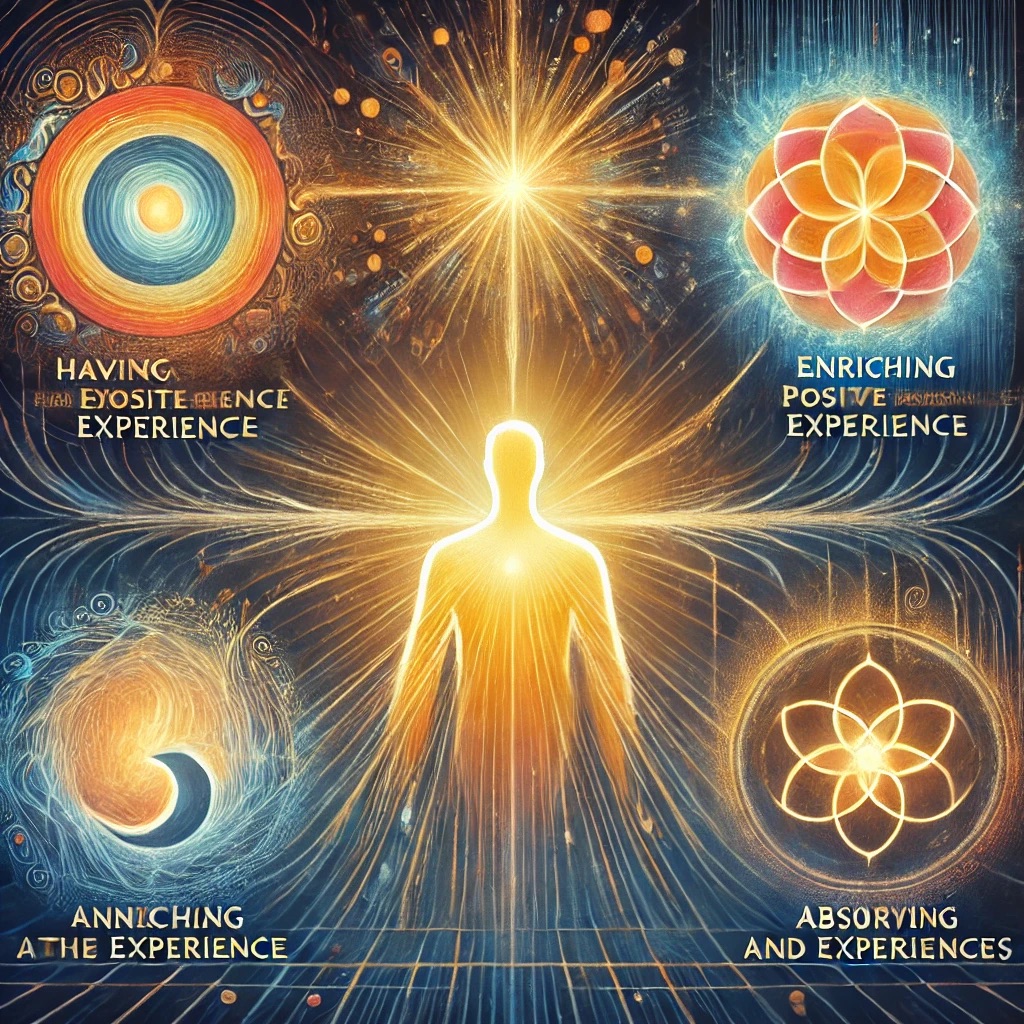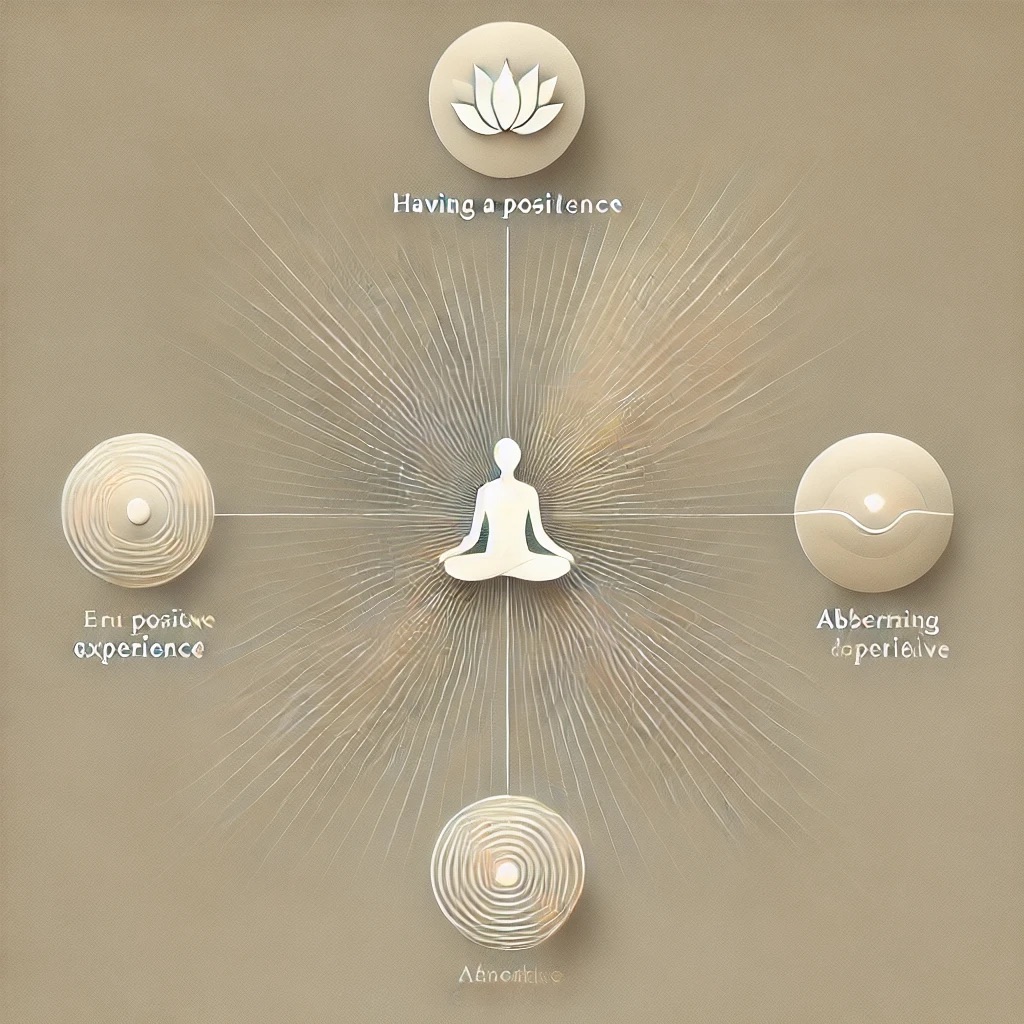
ChatGPT:
Hardwiring Happiness: Detailed Summary
📚 Introduction: Rewiring the Brain for Happiness
Hardwiring Happiness by Rick Hanson centers around the idea that humans are evolutionarily wired to focus on negative experiences, a tendency known as the negativity bias. This bias served an important role in survival, but in modern life, it often leaves people stressed, anxious, and less happy. The book offers an actionable method, grounded in neuroscience and positive psychology, for overcoming this bias and fostering emotional well-being. By deliberately internalizing positive experiences, we can literally change the structure of our brain through a process called neuroplasticity, leading to more lasting happiness and resilience.
🧠 The Negativity Bias: Why We Focus on the Negative
The brain’s negativity bias evolved to keep our ancestors alert to dangers in their environment. Negative experiences—like threats or conflicts—had a greater impact on survival than positive ones, so the brain became finely attuned to potential dangers. While this bias may have helped early humans survive in the wild, it now tends to make modern people overly focused on negative emotions like fear, stress, and anxiety. Hanson explains that this tendency to dwell on the negative leaves little room for joy and gratitude, even when positive experiences occur.
Key Takeaway: Understanding the brain’s natural bias toward the negative is the first step in learning how to overcome it.
🌱 Neuroplasticity: The Brain’s Ability to Change
The concept of neuroplasticity is central to Hanson’s approach. Neuroplasticity refers to the brain’s ability to change its structure and function in response to experiences. This means that with conscious effort, we can reshape our brains over time. Hanson uses this idea to argue that by consistently absorbing positive experiences, we can create new neural pathways that support happiness and well-being, instead of those that feed into negativity and stress. Just as physical exercise strengthens muscles, focusing on positive thoughts strengthens the neural circuits associated with happiness.
Key Takeaway: Your brain is not fixed; it can be reshaped by deliberately internalizing positive experiences.
🌿 The HEAL Process: A Simple Four-Step Method
Hanson’s main tool for cultivating happiness is the HEAL process, a four-step method that aims to help individuals internalize positive experiences and effectively rewire the brain. The four steps are:
- Have a positive experience: This could be anything from enjoying a meal to feeling appreciated by someone.
- Enrich the experience: Spend time focusing on the details of the positive experience, making it richer and more vivid in your mind.
- Absorb the experience: Let the positive feelings really sink in, imagining them filling your body and mind.
- Link positive and negative experiences: This optional step involves thinking of a negative memory or feeling while bringing in the positive experience to lessen the impact of the negative one.
This process takes moments from your daily life—often things you might overlook or take for granted—and turns them into sources of lasting happiness. The more you practice HEAL, the more your brain will automatically start to look for positive experiences and focus less on negativity.
Key Takeaway: By practicing the HEAL process, you can internalize positive experiences and reduce the brain’s focus on the negative.
✨ Have: The Importance of Positive Experiences
The first step, Have, is about noticing positive experiences as they happen. Many of us are so busy or preoccupied that we don’t fully register positive moments. They slip by unnoticed, while negative experiences tend to stick. Hanson encourages readers to become more aware of positive moments throughout the day, whether they’re small joys like sipping coffee or deeper feelings like being appreciated by a friend. Simply noticing these moments is the beginning of hardwiring happiness into the brain.
Key Takeaway: Be mindful and actively seek out positive experiences, no matter how small.
🌸 Enrich: Make the Moment More Powerful
The next step, Enrich, involves deepening the positive experience. Instead of letting a good moment pass by quickly, you spend extra time savoring it. For instance, if you’re enjoying a beautiful sunset, you don’t just glance at it; you focus on the colors, the feeling it evokes, and the sense of peace it brings. The idea is to make the experience more intense, so it has a stronger impact on your brain.
Key Takeaway: Savoring and focusing on the details of positive moments enriches the experience, making it more likely to create lasting change.
💡 Absorb: Let It Sink In
In the Absorb phase, you take the enriched experience and consciously allow it to sink in. Hanson encourages readers to imagine the positive feeling flowing through their entire body and mind, like warmth spreading through you. The longer and more fully you absorb the experience, the stronger its effect will be on your brain. This is where neuroplasticity comes into play, as you’re actively engaging the brain’s capacity to rewire itself for happiness.
Key Takeaway: Absorbing positive moments allows your brain to physically change, reinforcing neural pathways for happiness.
🌱 Link: Connecting Positive and Negative Experiences
The optional Link step is where you bring a negative memory or feeling into your mind, while keeping the positive experience in the foreground. The goal is to associate the positive feelings with the negative ones, thereby diminishing the impact of the negative. Hanson emphasizes that the positive should always dominate the experience, reducing the negative’s hold on your thoughts and emotions. Over time, this helps to weaken the brain’s negativity bias and reduce the emotional charge of negative experiences.
Key Takeaway: Linking positive and negative experiences helps diminish the power of negative memories or feelings.
🌿 Daily Practice: Rewiring the Brain
Hanson emphasizes that while the HEAL process is simple, it requires consistent practice to be effective. He compares the brain to a garden, where the seeds of happiness must be planted and nurtured regularly. Each time you go through the HEAL process, you’re training your brain to seek out and hold onto positive experiences. The more you do this, the easier it becomes, and over time, your brain will naturally start to focus more on the positive and less on the negative.
Key Takeaway: Consistency is key to rewiring the brain for happiness—make HEAL a daily practice.
💖 Application to Relationships and Life
The book also discusses how hardwiring happiness can improve relationships and overall quality of life. When you’re more attuned to positive experiences, you become more resilient and better able to cope with challenges. This makes you less reactive to stress, more patient, and more appreciative of the people around you. Hanson provides examples of how HEAL can be applied to improve relationships, enhance professional success, and build a deeper sense of meaning in life.
Key Takeaway: By rewiring your brain for positivity, you can improve your relationships, resilience, and overall well-being.
🔄 Long-Term Transformation
One of Hanson’s key arguments is that the changes brought about by the HEAL process are not temporary; they can result in long-term transformation of the brain. Over time, the neural circuits associated with happiness, resilience, and well-being will grow stronger, while those associated with negativity will weaken. This means that the brain can be permanently rewired for happiness, leading to a more fulfilling, balanced, and joyful life.
Key Takeaway: With regular practice, the HEAL process can create lasting changes in the brain, leading to a happier, more resilient life.
🌟 Final Thoughts
Rick Hanson’s Hardwiring Happiness offers a practical, neuroscience-based approach to overcoming the brain’s negativity bias and fostering long-term happiness. Through the HEAL process, readers learn how to take in the good and internalize positive experiences, rewiring their brains for happiness and emotional resilience. By applying these principles consistently, individuals can transform not only their personal happiness but also their relationships and ability to handle life’s challenges. The book is both scientifically grounded and easily applicable, making it a valuable resource for anyone looking to cultivate lasting well-being.
FAQs on Hardwiring Happiness by Rick Hanson
1. What is the main idea of Hardwiring Happiness?
The main idea of Hardwiring Happiness is that the brain has a natural negativity bias, which causes people to focus more on negative experiences than positive ones. By intentionally focusing on and internalizing positive experiences, we can rewire our brains through a process called neuroplasticity to develop more happiness, resilience, and emotional well-being.
2. What is the HEAL method?
The HEAL method is a four-step process designed to help you internalize positive experiences and rewire your brain for happiness:
- Have a positive experience.
- Enrich the experience by focusing on its details.
- Absorb the positive feelings, allowing them to sink in deeply.
- Link the positive experience to a negative one (optional), to reduce the emotional weight of the negative experience.
3. Why does the brain focus more on negative experiences?
The brain’s negativity bias evolved as a survival mechanism. In prehistoric times, paying attention to threats and dangers was crucial for survival. This bias helps people stay alert to potential risks, but in modern life, it often leads to stress, anxiety, and unhappiness as we focus more on negative than positive experiences.
4. How does neuroplasticity help change our mindset?
Neuroplasticity is the brain’s ability to reorganize itself by forming new neural connections in response to experiences. By repeatedly focusing on positive experiences, you can strengthen neural pathways associated with happiness and weaken those connected to negativity, effectively “rewiring” your brain for greater emotional well-being.
5. How do I practice the HEAL method in daily life?
Start by becoming more aware of the positive experiences you encounter throughout the day, no matter how small. When you notice one, take a moment to enrich it by focusing on the details. Then, allow yourself to fully absorb the experience, imagining it filling your mind and body. Practicing this regularly will help you internalize positive feelings more deeply.
6. What kind of positive experiences should I focus on?
You can focus on any kind of positive experience, big or small. It could be something as simple as enjoying a meal, feeling appreciated by a friend, or noticing a beautiful sunset. The key is to enrich and absorb these experiences to make them more impactful on your brain.
7. Can the HEAL process help with negative emotions or trauma?
Yes. The optional Link step of the HEAL method allows you to connect a positive experience with a negative one, which can reduce the emotional impact of the negative memory or feeling over time. This process helps weaken the brain’s focus on negative experiences and strengthen positive emotional states.
8. How long does it take to see results from practicing HEAL?
Results depend on how often and consistently you practice. Over time, with regular application of the HEAL method, you can begin to notice a shift in your mindset and an increased focus on positive experiences. The process gradually rewires your brain for long-term happiness, but it’s important to be patient and persistent.
9. Is Hardwiring Happiness backed by science?
Yes, Hardwiring Happiness is based on neuroscience, particularly the concepts of neuroplasticity and the brain’s negativity bias. Hanson draws on research in both neuroscience and psychology to explain how the brain can be rewired to focus more on positive experiences and reduce negativity.
10. How can Hardwiring Happiness improve relationships?
When you’re more focused on positive experiences, you’re likely to be more appreciative, patient, and resilient in your relationships. By practicing the HEAL method, you can reinforce positive interactions with others, which can help strengthen emotional bonds and improve communication.

